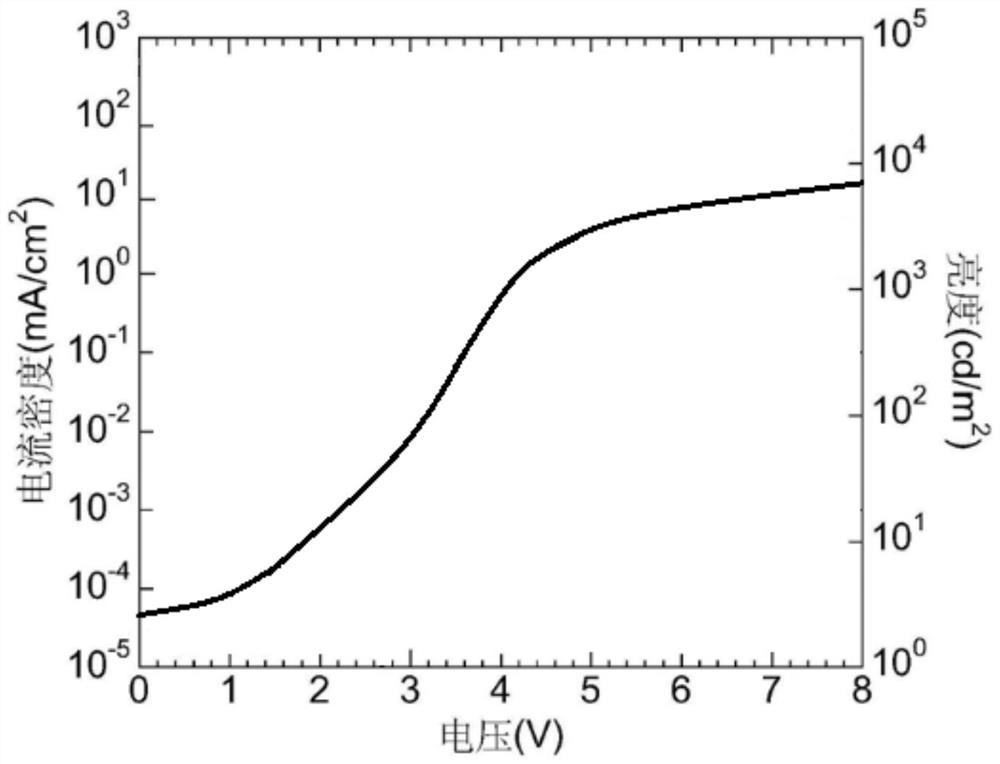Organic photoelectric material and preparation method thereof
A technology of organic photoelectric materials and photoelectric conversion materials, which is applied in the direction of conductive coatings, photovoltaic power generation, anti-corrosion coatings, etc., and can solve the problems of polyurethane retention and polyurethane polymer materials that are difficult to have photoelectric conversion properties.
- Summary
- Abstract
- Description
- Claims
- Application Information
AI Technical Summary
Problems solved by technology
Method used
Image
Examples
Embodiment 1
[0037] A method for preparing an organic photoelectric material, comprising the steps of:
[0038] (1) Weighing: Weigh according to the following raw materials: tetramethylene diisocyanate 40g; 2-oxiranyl-1,3 propanediol 20g; conductive carbon fiber 5g; 2,2-dimethylol propionic acid 25g; GaAs 15g; maleic anhydride 6g, spare;
[0039] (2) Oxidation of the surface of conductive carbon fiber: place the conductive carbon fiber weighed in step (1) in an ethanol / acetone solution with a volume ratio of 1:1, reflux for 48 hours, take it out, and dry it in an oven at 70°C. Weigh at regular intervals, stop drying until the last two weights no longer change, then mix the treated conductive carbon fiber with a concentrated nitric acid solution with a mass fraction of 69%, and the volume of the concentrated nitric acid solution 40mL, and ultrasonically treated at a temperature of 50°C, an ultrasonic power of 200W, and an ultrasonic frequency of 50kHz for 1.5h, then washed with water until...
Embodiment 2
[0045] A method for preparing an organic photoelectric material, comprising the steps of:
[0046] (1) Weighing: Weigh according to the following raw materials: 45g of hexamethylene diisocyanate; 25g of 2-oxiranyl-1,4-butanediol; 8g of conductive carbon fiber; 2,2-dimethylol Propionic acid 27g; InP 18g; Maleic anhydride 7g, spare;
[0047] (2) Oxidation of the surface of the conductive carbon fiber: put the conductive carbon fiber weighed in step (1) in an ethanol / acetone solution with a volume ratio of 1:1, reflux for 48 hours, take it out, and put it in an oven at 80°C for drying. Weigh at regular intervals, stop drying until the last two weights no longer change, then mix the treated conductive carbon fiber with a concentrated nitric acid solution with a mass fraction of 69%, and the volume of the concentrated nitric acid solution It was 48mL, and treated at a temperature of 80°C, an ultrasonic power of 200W, and an ultrasonic frequency of 50kHz for 1.25h, then washed with...
Embodiment 3
[0053] A method for preparing an organic photoelectric material, comprising the steps of:
[0054] (1) Weighing: Weigh the raw materials according to the following weights: 50g of isophorone diisocyanate; 30g of 3-oxirane-2,5-pentanediol; 10g of conductive carbon fiber; 2,2-dimethylol Propionic acid 30g; CdS 20g; Maleic anhydride 8g, spare;
[0055] (2) Oxidation of the surface of conductive carbon fiber: place the conductive carbon fiber weighed in step (1) in an ethanol / acetone solution with a volume ratio of 1:1, reflux for 48 hours, take it out, and dry it in an oven at 90°C. Weigh at regular intervals, stop drying until the last two weights no longer change, then mix the treated conductive carbon fiber with a concentrated nitric acid solution with a mass fraction of 69%, and the volume of the concentrated nitric acid solution 50mL, and ultrasonic treatment at a temperature of 100°C, an ultrasonic power of 200W, and an ultrasonic frequency of 50kHz for 1h, then washed wit...
PUM
| Property | Measurement | Unit |
|---|---|---|
| particle diameter | aaaaa | aaaaa |
| particle diameter | aaaaa | aaaaa |
| particle diameter | aaaaa | aaaaa |
Abstract
Description
Claims
Application Information
 Login to View More
Login to View More - R&D
- Intellectual Property
- Life Sciences
- Materials
- Tech Scout
- Unparalleled Data Quality
- Higher Quality Content
- 60% Fewer Hallucinations
Browse by: Latest US Patents, China's latest patents, Technical Efficacy Thesaurus, Application Domain, Technology Topic, Popular Technical Reports.
© 2025 PatSnap. All rights reserved.Legal|Privacy policy|Modern Slavery Act Transparency Statement|Sitemap|About US| Contact US: help@patsnap.com



